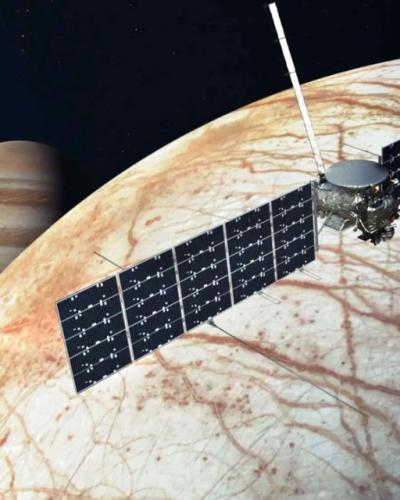An outer ice shell marked by “chaos terrain,” a vast ocean, cryovolcanoes, misty plumes, gravitational tides and intense radiation.
Jupiter’s moon Europa may have them all – and potentially conditions that could support life. To find out, NASA has launched its next flagship science mission, Europa Clipper – the space agency's first dedicated spacecraft mission to study an ocean world beyond Earth – and Cornell scientists will play a role in reporting discoveries about its habitability.
The mission is managed by NASA’s Jet Propulsion Laboratory – where Jonathan Lunine, the David C. Duncan Professor in the Physical Sciences Emeritus in the College of Arts and Sciences (A&S) and a member of Europa Clipper’s gravity science team, was recently named chief scientist – in partnership with the Johns Hopkins University Applied Physics Laboratory.
Four more faculty members are part of the official teams that will analyze data from the spacecraft’s nine instruments and a gravity science experiment – investigating the moon’s interior, composition and geology – when it begins 49 planned flybys of Europa starting in 2030, research that graduate students are helping to advance.
Read the full Cornell Chronicle article here.





